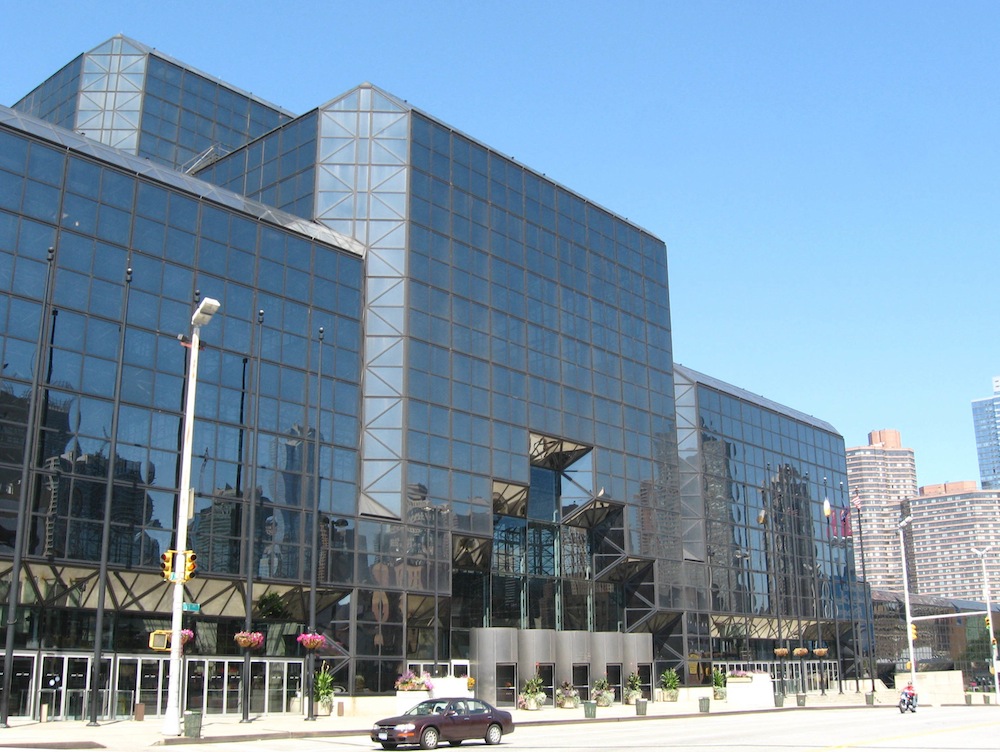The last recession isn’t over yet, at least as far as the glass products are concerned.
Glass manufacturers, which shut 11 of 47 float-glass North American plants between 2007 and 2014, are now playing catch-up with demand from commercial builders whose business is robust. The Wall Street Journal reports that glass prices have risen by more than 30% over the past 18 months. Construction projects are being delayed because they can’t get the glass they need, especially for curtain wall, the metal-framed glass panels that have become popular design components for skyscrapers, airport terminals, hotels, and many other nonresidential buildings.
“The glass guys are dictating the timetables of a project to us,” Ralph Esposito, who oversees Lend Lease’s commercial construction in New York, tells the Journal. AvalonBay Communities have seen glass prices rise by 35% to 45% from 2013, and expects this supply-and-demand dilemma to persist through early 2016, says Scott Kinter, its Senior Vice President in Boston.
The Producer Price Index for the broad category “flat glass” in July 2015 stood at 126.6, up 5% from July 2014. The Bureau of Labor Statistics does not adjust this category for seasonality.
Shortages have become so severe that The Related Cos., one of the country’s biggest developers, recently joined forces with M. Cohen & Sons, a specialty metal manufacturer, to open its own glass factory, called New Hudson Façades, in Linwood, Pa. The Journal quotes Bruce Beal, Related’s president, as stating that his firm needs more than 3,000 glass panels for one skyscraper it’s building on Manhattan’s West Side alone.
Demand and price increases for glass aren’t confined to North America, either. Saint-Gobain, one of the world’s leading glass producers, reported a 9.8% increase in flat glass sales, to 2.633 billion Euros (US$2.9 billion), for the first half of 2015, during which the company’s operating income for that category rose 48.1% to 194 million Euros.
Perhaps ironically, last April the Journal also reported how several cities across the country were pulling back on their glass-recycling programs because glass had become too difficult and expensive to handle.
Related Stories
| May 4, 2011
SAFTI FIRST to debut free apps for iPhone, iPod Touch, and iPad at AIA Convention
SAFTI FIRST, manufacturer of fire rated glass and framing solutions, will debut its mySAFTI app, the first interactive design tool that takes the guesswork out of choosing the correct fire rated glass product, at the AIA National Convention in New Orleans, May 12-14. Visit booth1634.
| Apr 22, 2011
AAMA releases voluntary tornado specification
As tornado season escalates and increased tornado activity has devastated parts of the Midwest and the South during he past few weeks, the American Architectural Manufacturers Association (AAMA) has released a voluntary specification for testing and rating building components that will be exposed to tornados and similar extreme wind and rain conditions.
| Apr 19, 2011
Is a building sustainable if it kills birds?
Migratory birds were flying into the windows and falling, dead or injured, to the foot of the LEED-Platinum FBI building in Chicago. The FBI building isn't the only LEED-certified structure to cause problems for migratory birds, however. Some of the more than 33,000 LEED-certified buildings in the U.S. use large amounts of glass to bring in natural light and save on energy—and all that glass can confuse birds.
| Apr 14, 2011
How AEC Professionals Choose Windows and Doors
Window and door systems need to perform. Respondents to our annual window and door survey overwhelmingly reported that performance, weather resistance, durability, and quality were key reasons a particular window or door was specified.
| Apr 12, 2011
Entrance pavilion adds subtle style to Natural History Museum of Los Angeles
A $13 million gift from the Otis Booth Foundation is funding a new entrance pavilion at the Natural History Museum of Los Angeles County. CO Architects, Los Angeles, is designing the frameless structure with an energy-efficient curtain wall, vertical suspension rods, and horizontal knife plates to make it as transparent as possible.
| Apr 11, 2011
From Wired Glass to Clear Solutions: Designing with Fire Rated Glass Today
This white paper provides readers with a solid understanding of fire rated glass based on the two types of FRG recognized in the IBC – fire protective and fire resistive glazing. The white paper is intended to give readers the ability to specify the correct, code-approved FRG product for particular applications based on the most up-to-date version of the IBC.
| Mar 29, 2011
Chicago’s Willis Tower to become a vertical solar farm
Chicago’s iconic Willis Tower (formerly the Sears Tower) is set to become a massive solar electric plant with the installation of a pilot solar electric glass project.
| Feb 11, 2011
Four Products That Stand Up to Hurricanes
What do a panelized wall system, a newly developed roof hatch, spray polyurethane foam, and a custom-made curtain wall have in common? They’ve been extensively researched and tested for their ability to take abuse from the likes of Hurricane Katrina.
| Feb 10, 2011
7 Things to Know About Impact Glazing and Fire-rated Glass
Back-to-basics answers to seven common questions about impact glazing and fire-rated glass.












